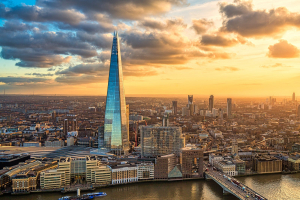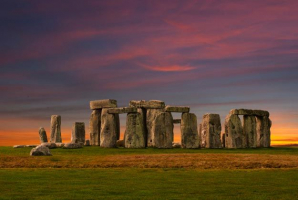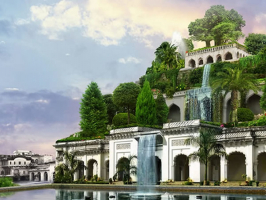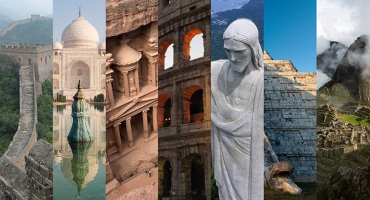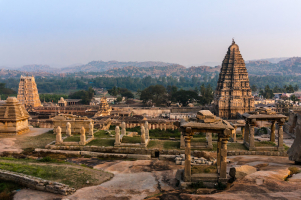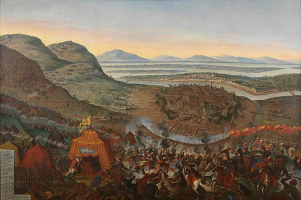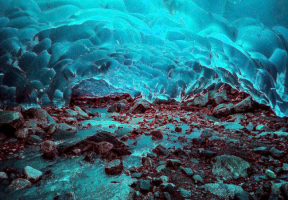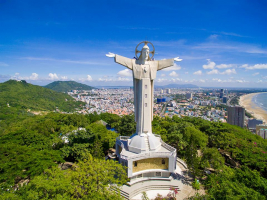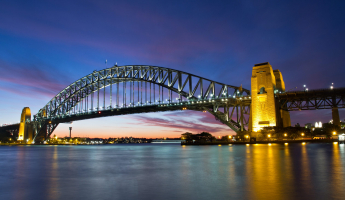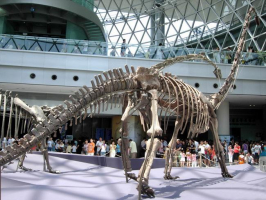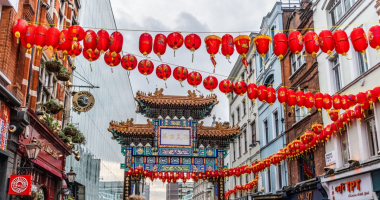Top 7 New Wonders of the World
Given that the original Seven Wonders list was compiled in the 2nd century BCE, and that only one entrant is still standing (the Pyramids of Giza), it seemed ... read more...time for an update. Therefore, Canadian - Swiss Bernard Weber and The New 7 Wonders Foundation (N7W) based in Zurich, Switzerland launched a campaign to determine the New Seven Wonders of the World. The 7 "winners" are announced on 7 July 2007 in Lisbon, at Estádio da Luz. And in this list, we'll show you these 7 new wonders of the world!
-
The Great Wall of China is a series of fortifications that were built across the historical northern borders of ancient Chinese states and Imperial China. The history of this giant historic site dated way back from as early as the 5th century BC, with selective stretches later joined by Qin Shi Huang (220–206 BC), the first emperor of China. Later on, many successive dynasties built and maintained multiple stretches of border walls. Nowadays, the 2 most famous parts of the Great Wall are Han Great Wall and Ming Great Wall, especially the Ming Great Wall that was believed to be built from 1368 to 1644.
Today, the defensive system of the Great Wall is generally recognized as one of the most impressive architectural feats in history. The frontier walls built by different dynasties stretch from Liaodong in the east to Lop Lake in the west, from the present-day Sino–Russian border in the north to Tao River in the south; along an arc that roughly delineates the edge of the Mongolian steppe; spanning 21,196.18 km (13,170.70 mi) in total. Furthermore, the defensive characteristics of the Great Wall were enhanced by the construction of watchtowers, troop barracks, garrison stations, signaling capabilities through the means of smoke or fire, etc. Therefore, the Great Wall of China worked perfectly as a defensive border control.
Moreover, another purpose of the Great Wall was to allow the imposition of duties on goods transported along the Silk Road, regulation, or encouragement of trade. And today, when China opened its borders to foreign merchants and visitors, the Great Wall became a main attraction for tourists from all over the world, giving this wonder a new purpose.
One of the most well-known things that people have been talking about the Great Wall forever, is that the Great Wall can be seen (with the naked eye) from space. This "myth" first appeared in a letter written in 1754 by the English antiquary William Stukeley. The claim was also mentioned by Henry Norman in 1895 where he states "besides its age, it enjoys the reputation of being the only work of human hands on the globe visible from the Moon." However, this is a false fact, since it is proven by astronauts that The Great Wall of China cannot be seen from the Moon. Even though the myth is thoroughly debunked, it is still ingrained in popular culture.Official name: "The 10,000-li Long Wall" (万里长城)
Situated in: China
Built in: Around the 5th - 8th century BC
Built by: Mostly Qin Dynasty, Ming dynasty
Designated by UNESCO: 1987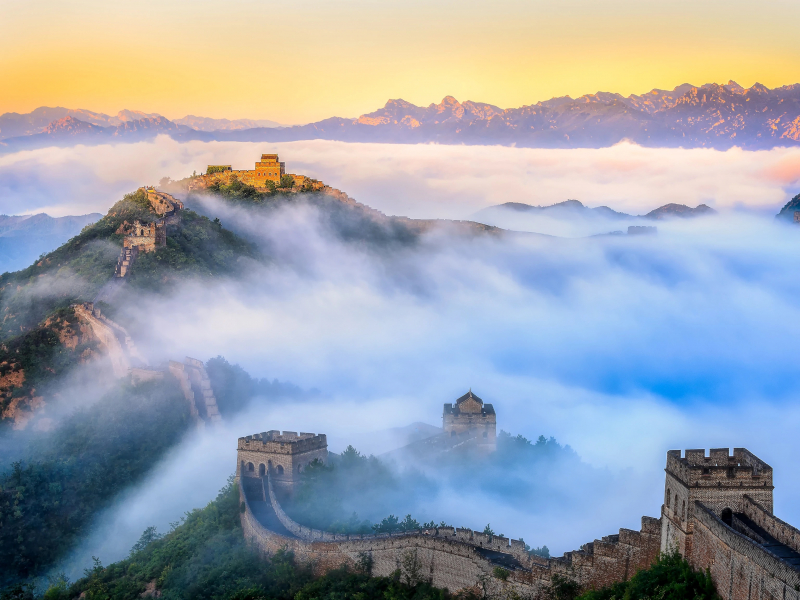
Photo: National Geographic Video: ChannelM -
The Taj Mahal is an Islamic ivory-white marble mausoleum by the Yamura river in Agra, India. It was constructed by the Mughal Emperor Shah Jahān (reigned 1628 - 1658) to honor his wife Mumtāz Maḥal who died in 1631 while giving birth to their 14th child. It also houses the tomb of Shah Jahan himself. The tomb is the centerpiece of a 17-hectare (42-acre) complex and was essentially completed in 1643, but work continued on other phases of the project for another 10 years. The Taj Mahal complex is believed to have been completed in its entirety in 1653 at a cost estimated at the time to be around ₹32 million, which in 2020 would be approximately about US $1 billion.
It is believed that the project Taj Mahal was made possible by 20,000 artisans under the guidance of a board of architects who were experts at that time. Therefore, this place is known for reflecting the beauty of nature and divinity through breathtakingly beautiful architecture and design. The Taj Mahal incorporates and expands on design traditions of Indo-Islamic and earlier Mughal architecture. Specific inspiration came from successful Timurid and Mughal buildings. While earlier Mughal buildings were primarily constructed of red sandstone, Shah Jahan promoted the use of white marble inlaid with semi-precious stones. Buildings under his patronage reached new levels of refinement in all parts of the Taj Mahal, including Tomb, Exterior decorations, Interior decoration, Garden, and Outlying buildings.
The Taj Mahal also has several myths, though none of which are supported by the archaeological record, have appeared asserting that people other than Shah Jahan and the original architects were responsible for the construction of the Taj Mahal. For instance, in 2000, Purushottam Nagesh Oak - an Indian historical negationist launched a petition to declare that a Hindu king built the Taj Mahal. In 2005, a social worker and preacher named Amar Nath Mishra claimed that the Taj Mahal was built by the Hindu King Parmal Dev in 1196. Another such unsupported theory is that the Taj Mahal was designed by an Italian, Geronimo Vereneo, or that a Frenchman, Austin of Bordeaux designed the Taj.
Despite all those myths and rumors, the Taj Mahal was loved by many, and designated as a UNESCO World Heritage Site for being "the jewel of Muslim art in India and one of the universally admired masterpieces of the world's heritage".Official name: Taj mahal, or Tadj Mahall
Situated in: India
Built in: Around 1632 - 1653
Built by: Emperor Shah Jahān
Designated by UNESCO: 1983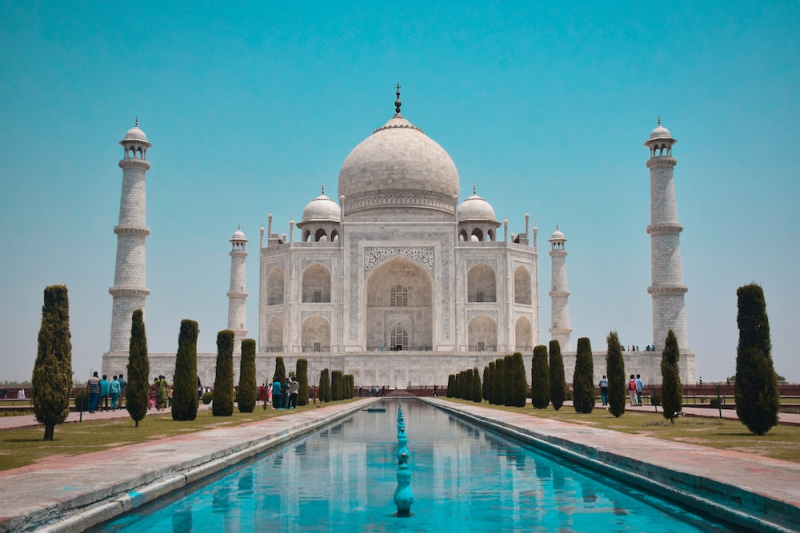
Photo: Unsplash Video: the Luxury Travel Expert -
The next wonder on this list earned its name from its unique red color - Petra (meaning "Rose City"). This is an astonishing historical and archeological city adjacent to the mountain of Jabal Al-Madbah, in a basin surrounded by mountains forming the eastern flank of the Arabah valley, and situated about 150 miles south of both Jerusalem and Amman, the capital of Jordan, and about midway between Damascus, Syria, and the Red Sea. Petra is thought to be established as the capital, and also a trading post by the Nabataean, an Arab Bedouin tribe indigenous to the region. The trading business gained the Nabataeans considerable revenue and Petra became the focus of their wealth. Petra flourished in the 1st century AD, and its population peaked at an estimated 20,000 inhabitants.
People can access the city through a 1.2-kilometer-long gorge called the Siq, which leads directly to the Khazneh. Famous for its rock-cut architecture and water conduit system, Petra is also called the "Rose City" because of the color of the stone from which it is carved. But one of the main things that Petra is most known for is its Hellenistic architecture. The facades of the tombs in Petra display this type of architecture and it also grants reflection on the different types of cultures that the Nabataeans traded with. Most of these contain small burials and niches that are carved into the stone.
Ever since Johann Ludwig Burckhardt aka Sheikh Ibrahim had re-discovered the ruined city of Petra in 1812, the cultural heritage site has attracted different people who shared an interest in the ancient history and culture of the Nabataeans such as travelers, pilgrims, painters, and savants. Nowadays, the city is a symbol of Jordan, as well as Jordan's most-visited tourist attraction. And UNESCO has described Petra as "one of the most precious cultural properties of man's cultural heritage".
With its mysterious and out-of-this-world beauty, Petra also appeared in many famous Hollywood films such as Indiana Jones and the Last Crusade, Arabian Nights, Passion in the Desert, Mortal Kombat: Annihilation, Sinbad and the Eye of the Tiger, The Mummy Returns, Krrish 3, Transformers: Revenge of the Fallen, etc.Official name: Petra; Originally Raqmu or Raqēmō
Situated in: Jordan
Built in: 5th century BC
Built by: The Nabataean
Designated by UNESCO: 1985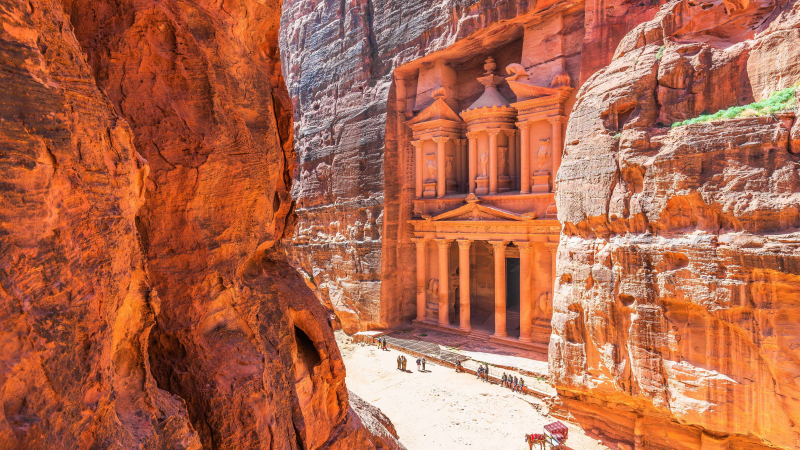
Photo: Culture Trip Video: BBC -
The Colosseum is the largest ancient amphitheater ever built and is still the largest standing amphitheater in the world today. This amphitheater is located in the center of Rome, Italy. The construction of the Colosseum began under the emperor Vespasian and was completed in 80 AD under his successor and heir, Titis.
This place was first opened in A.D. 80 by Titus for 100 days of games, including gladiatorial combats and wild animal fights. It then was used for gladiatorial contests and public spectacles including animal hunts, executions, re-enactments of famous battles, dramas based on Roman mythology, and briefly mock sea battles. It was later reused for such purposes as housing, workshops, quarters for a religious order, a fortress, a quarry, and a Christian shrine.
The Colosseum is built of travertine limestone, tuff (volcanic rock), and brick-faced concrete. It is an entirely free-standing structure! It is elliptical in plan and is 189m long, and 156m wide, with a base area of 24,000 square meters. The central arena is an oval shape 87m long and 55m wide, surrounded by a wall 5m high. The Colosseum could accommodate 87,000 people, although modern estimates put the figure at around 50,000. They were seated in a tiered arrangement that reflected the rigidly stratified nature of Roman society. Special boxes were provided at the north and south ends respectively for the Emperor and the Vestal Virgins, providing the best views of the arena.
Having been substantially ruined by earthquakes and stone robbers, two-thirds of the original structure has been destroyed. However, the Colosseum today is still an iconic symbol of Imperial Rome and is one of the most popular tourist destinations in Italy. There is now a museum dedicated to Eros on the upper floor of the outer wall of the building. Beneath the Colosseum, a network of subterranean passageways once used to transport wild animals and gladiators to the arena opened to the public. The Colosseum is also the site of Roman Catholic ceremonies in the 20th and 21st centuries.Official name: The Colosseum (or Coliseum)
Situated in: Italy
Built in: Around A.D 70–80
Built by: Emperor Vespasian of the Flavian dynasty
Designated by UNESCO: 1980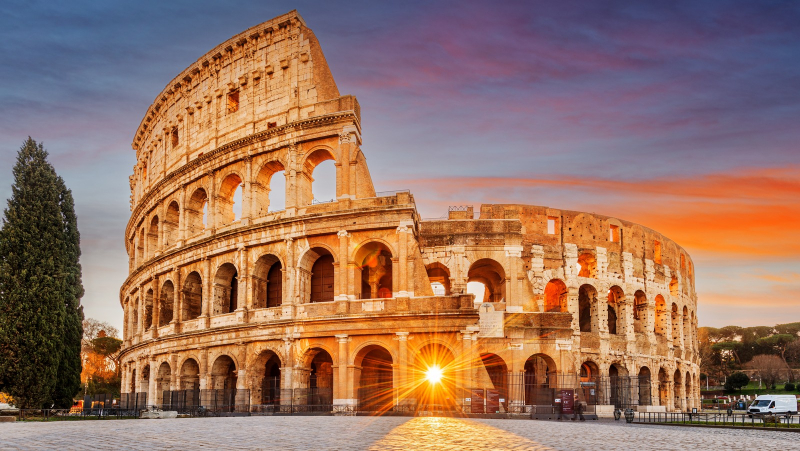
Photo: Grunge Video: Rick Steves' Europe -
Chichén Itzá was a large pre-Columbian city built by the Maya people in Yucatán State, Mexico. This historic site was a major focal point in the Northern Maya Lowlands from the Late Classic (c. AD 600–900) through the Terminal Classic (c. AD 800–900) and into the early portion of the Postclassic period (c. AD 900–1200). Chichen Itza was one of the largest Maya cities and it was likely to have been one of the mythical great cities, or Tollans, referred to in later Mesoamerican literature. The city may have had the most diverse population in the Maya world.
Chichén Itzá exhibits a multitude of architectural styles, reminiscent of styles seen in central Mexico and of the Puuc and Chenes styles of the Northern Maya lowlands. The presence of central Mexican styles was once thought to have been representative of direct migration or even conquest from central Mexico, but most contemporary interpretations view the presence of these non-Maya styles more as the result of cultural diffusion. The ruins in the city feature religious temples of the Maya Civilization that also includes the Temple of Kukulkán which has 365 steps, one for each day in the Haab solar calendar.
The ruins of Chichen Itza are federal property, and the site's stewardship is maintained by Mexico's Instituto Nacional de Antropología e Historia (National Institute of Anthropology and History). The land under the monuments had been privately owned until 29 March 2010, when it was purchased by the state of Yucatán. Nowadays, even though Chichen Itza is one of the most famous tourist attractions in Mexico, The National Institute of Anthropology and History has closed a number of monuments to public access. While visitors can walk around them, they can no longer climb them or go inside their chambers.
Official name: Chichén Itzá, Pre-Hispanic City of Chichen-Itza
Situated in: Mexico
Built in: 5th-13th century
Built by: Maya-Toltec civilization
Designated by UNESCO: 1988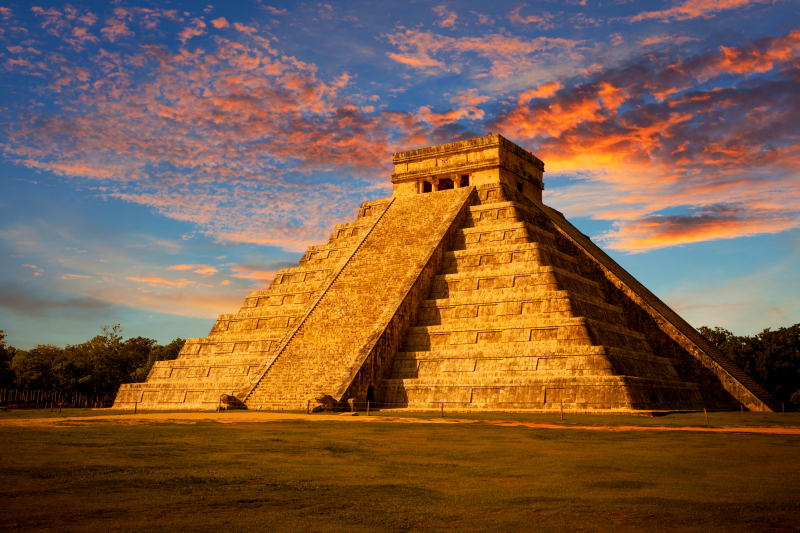
Photo: Itinari Video: National Geographic -
Machu Picchu is a 15th-century Inca citadel located in southern Peru on a 2,430-meter mountain range. Most recent archaeologists believe that Machu Picchu was constructed as an estate for the Inca emperor Pachacuti (1438–1472). Often referred to as the "Lost City of the Incas", it is the most familiar icon of the Inca civilization. The Incas built the estate around 1450 but abandoned it a century later, at the time of the Spanish conquest. Historical research published in 2022 claims that the site was probably called Huayna Picchu by the Inca, as it exists on the smaller peak of the same name.
Machu Picchu was built in the classical Inca style, with polished dry-stone walls. Its three primary structures are the Intihuatana, the Temple of the Sun, and the Room of the Three Windows. Most of the outlying buildings have been reconstructed in order to give visitors a better idea of how they originally appeared. Moreover, the Incas, in contrast to the Maya, had no written language, and no European visited the site until the 19th century, so far as is known. There are, therefore, no written records of the site while it was in use. The names of the buildings, their supposed uses, and their inhabitants are all the product of modern archeologists, on the basis of physical evidence, including tombs at the site.
People often think of Machu Picchu as a ruins historic site, but there's actually a modern town of Machu Picchu that is located just below the ruins, along the Urubamba river. The town is also known as Aguas Calientes (hot springs), with a post office, a train station, many inexpensive and some expensive hotels, and other services for the many tourists. There is even a luxury hotel on the mountain, near the ruins.
Speaking of Machu Picchu, we can not ignore the human sacrifice practice and mysticism of this place. There is little information describing human sacrifices at Machu Picchu, though many sacrifices were never given a proper burial, and their skeletal remains succumbed to the elements. However, there is evidence that retainers were sacrificed to accompany a deceased noble in the afterlife. Animal, liquid, and dirt sacrifices to the gods were more common, made at the Altar of the Condor. The tradition is believed to be upheld by members of the New Age Andean religion.Official name: Machu Picchu, Historic Sanctuary of Machu Picchu
Situated in: Peru
Built in: Around 1450 - 1460
Built by: Incan Empire
Designated by UNESCO: 1983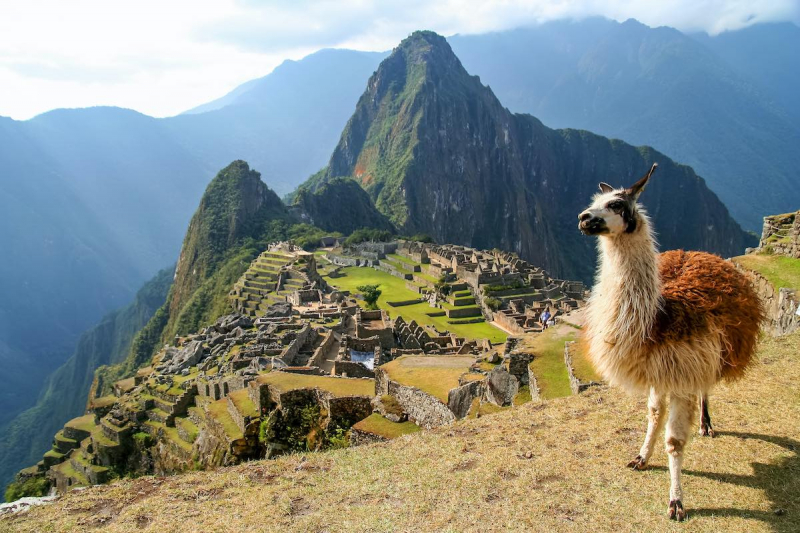
Photo: Travel Off Path Video: National Geographic -
Christ the Redeemer Statue or Cristo Redentor is an Art Deco-style statue of Jesus located on the peak of Corcovado mountain in the Tijuca Forest National Park overlooking the city of Rio de Janeiro, Brazil. The giant statue was created by French sculptor Paul Landowski and built by Brazilian engineer Heitor da Silva Costa, in collaboration with French engineer Albert Caquot and Romanian sculptor Gheorghe Leonida. Christ the Redeemer differs considerably from its original design, as the initial plan was a large Christ with a globe in one hand and a cross in the other. Although the project organizers originally accepted the design, it later changed to the statue of today, with the arms spread out wide.
Christ the Redeemer is 30m high, excluding its 8m pedestal. The arms wide open stretch 28m wide. It is made of reinforced concrete and soapstone, weighs 635 metric tons (625 long, 700 short tons), and costs approximately $250,000 to build, much of which was raised through donations. In 1990, several organizations, including the Archdiocese of Rio de Janeiro, media company Grupo Globo, oil company Shell do Brasil, environmental regulator IBAMA, National Institute of Historic and Artistic Heritage, and the city government of Rio de Janeiro entered into an agreement to conduct restoration work. The restoration involved one hundred people and used more than 60,000 pieces of stone taken from the same quarry as the original statue.
Despite being one of the 7 new wonders of the world, Christ the Redeemer has only been officially awarded the status of World Heritage site by UNESCO in 2016. Even though UNESCO announced the status in 2012, the status only became official after the Brazilian authorities were given four years to report on their plans for protecting the likes of Flamengo Park, Sugarloaf Mountain, the Corcovado, Copacabana beach, the Botanical Garden and Tijuca forest. An official ceremony was held on December 13, 2016, at Tijuca National Park at Corcovado Hill to present the registration document of Rio de Janeiro city as “Carioca Landscapes between Mountain and Sea” on the UNESCO world heritage list.
Even though there are uncountable similar structures in the world, Christ the Redeemer is still considered a symbol of Christianity around the world. The statue has also become a cultural icon of both Rio de Janeiro and Brazil.Official name: Christ the Redeemer
Situated in: Brazil
Built in: 1922 - 1931
Built by: Designed by sculptor Paul Landowski and built by engineer Heitor da Silva Costa in collaboration with Albert Caquot. Sculptor Gheorghe Leonida created the face
Designated by UNESCO: 2016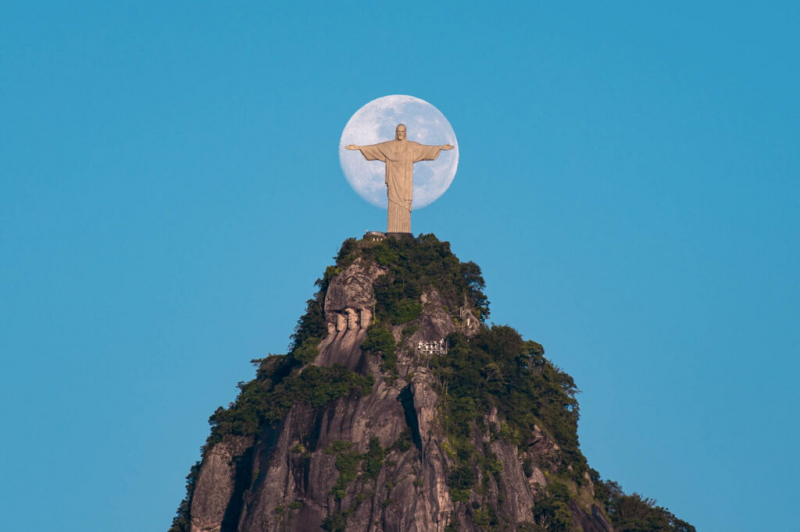
Photo: I Heart Brazil Video: The New York Times










